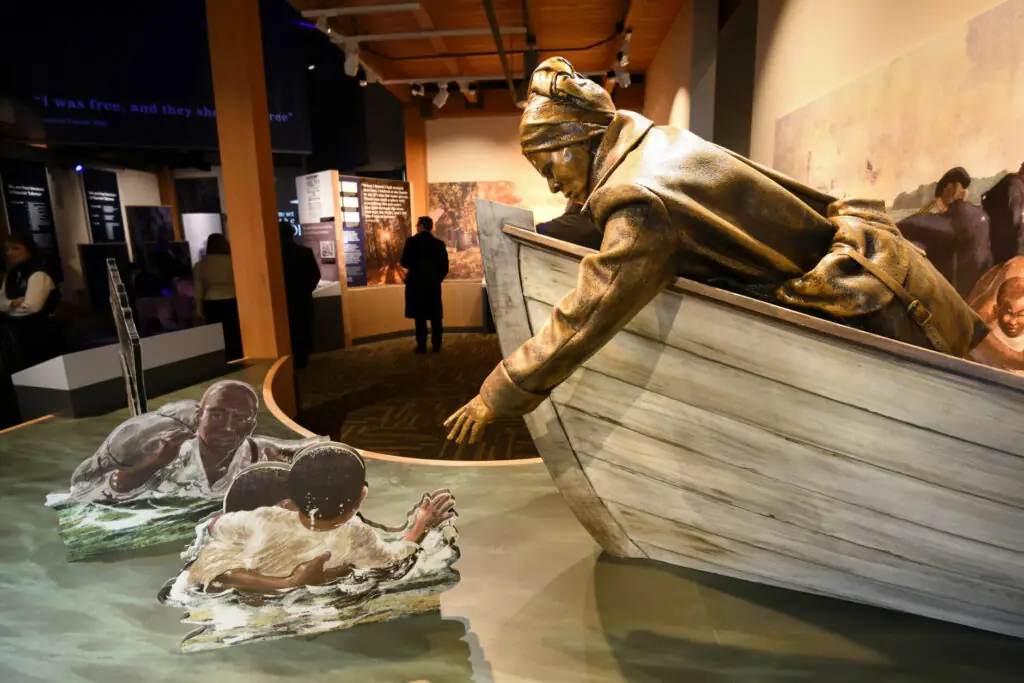The institution of slavery casts a long and dark shadow over American history, leaving an indelible legacy of oppression and struggle. But when did this odious practice finally meet its end in the United States? This article delves into the complex and tumultuous journey towards the abolition of slavery, tracing the origins of legalized enslavement, the tireless efforts of abolitionists, and the ultimate legal culmination in the form of the 13th Amendment. It also explores the challenges of the Reconstruction Era, the rise of Jim Crow laws, and the enduring struggle for civil rights, reflecting on the lasting impact of this pivotal chapter in American history.

✅ AI Essay Writer ✅ AI Detector ✅ Plagchecker ✅ Paraphraser
✅ Summarizer ✅ Citation Generator
The Era of Legalized Slavery
The origins of slavery in America can be traced back to the early 17th century when enslaved Africans were forcibly brought to the continent. What began as an economic venture soon evolved into a deeply entrenched system, fueled by economic, social, and political factors. The growth of cash crop agriculture, particularly tobacco and cotton, created a relentless demand for enslaved labor. Slave codes and laws were developed to institutionalize slavery, reducing enslaved people to mere property and stripping them of basic human rights.
The Abolitionist Movement
The abolitionist movement, which gained momentum in the late 18th and early 19th centuries, was fueled by the unwavering commitment of remarkable individuals who dedicated their lives to ending the institution of slavery.
Harriet Beecher Stowe, a prominent figure in the movement, authored the groundbreaking novel “Uncle Tom’s Cabin.” Published in 1852, this influential work exposed the brutal and dehumanizing aspects of slavery. Stowe’s vivid portrayal of enslaved characters and their suffering awakened the conscience of countless readers and galvanized support for abolition.
Frederick Douglass, himself a former enslaved person, emerged as one of the most influential abolitionists of his time. His powerful autobiographical works, such as “Narrative of the Life of Frederick Douglass, an American Slave,” provided firsthand accounts of the horrors of slavery and the yearning for freedom. Douglass also became an eloquent orator, captivating audiences with his impassioned speeches advocating for the immediate and unconditional abolition of slavery.

The Underground Railroad, a clandestine network of safe houses and escape routes, played a vital role in aiding enslaved individuals seeking freedom. Conductors like Harriet Tubman risked their lives to guide hundreds of enslaved people to safety, often through perilous journeys.
These abolitionists and the Underground Railroad symbolize the determination and courage of those who fought against the horrors of slavery, contributing significantly to the eventual end of this dark chapter in American history.

13th Amendment and the Official End of Slavery
The culmination of decades of struggle came in 1865 with the passage and ratification of the 13th Amendment to the United States Constitution. This amendment unequivocally abolished slavery throughout the nation, declaring that “neither slavery nor involuntary servitude, except as a punishment for crime whereof the party shall have been duly convicted, shall exist within the United States.” This momentous achievement marked the official end of legalized slavery and was a defining moment in American history.
Reconstruction Era and Its Challenges
The Reconstruction Era, spanning from 1865 to 1877, was a pivotal period in American history following the Civil War and the official abolition of slavery. While the 13th Amendment represented a significant milestone, the challenges that emerged during this time were formidable.
Key Challenges during the Reconstruction Era:
- Resistance to Civil Rights: Many Southern states resisted the granting of civil rights to African Americans and sought to maintain white supremacy.
- Violence and Intimidation: White supremacist groups like the Ku Klux Klan used violence and intimidation to suppress African American political and social progress.
- Discriminatory Practices: “Jim Crow” laws enforced racial segregation and denied African Americans access to equal opportunities and facilities.
- Struggles for Voting Rights: Despite the 15th Amendment, African Americans faced obstacles like literacy tests and poll taxes that hindered their voting rights.
- Political Disputes: Disagreements over the implementation of Reconstruction policies led to tensions between the federal government and Southern states.
The ratification of the 14th Amendment aimed to ensure equal protection under the law for all citizens, including African Americans. Additionally, the 15th Amendment extended voting rights to individuals regardless of their race or color. However, these progressive steps were met with vehement resistance. Despite these challenges, the Reconstruction Era was a crucial chapter in the ongoing struggle for civil rights and racial equality in the United States. It laid the groundwork for the continued fight for justice and equal rights that would persist throughout the 20th century and beyond.
Post-Reconstruction Era and Jim Crow
The post-Reconstruction Era marked a disheartening chapter in American history as the nation grappled with the rise of Jim Crow laws, an insidious system that perpetuated racial segregation and discrimination. Despite the official end of slavery, African Americans faced daunting challenges.
Jim Crow laws were a set of racially discriminatory laws that enforced segregation and systemic discrimination against African Americans in the United States, particularly in the late 19th and early 20th centuries. These laws mandated racial separation in public facilities, schools, transportation, and various aspects of daily life, perpetuating racial inequality and oppression.
Jim Crow laws enforced strict racial separation, imposing segregation in public facilities, schools, transportation, and nearly every aspect of daily life. These laws systematically oppressed African Americans, denying them basic civil rights and relegating them to second-class citizenship. The legacy of slavery endured through deeply entrenched racial prejudice and systemic injustice.
The struggle for civil rights persisted as African Americans confronted systemic barriers to equality. Activists like W.E.B. Du Bois, Booker T. Washington, and countless others emerged as champions of racial justice, advocating for equal rights, education, and an end to segregation.
The post-Reconstruction Era was a turbulent period in which the fight for civil rights gained momentum, setting the stage for the modern civil rights movement. The enduring spirit of resilience and determination among African Americans would continue to shape the nation’s ongoing struggle for racial equality and justice.
Conclusion
The journey to end slavery in America was arduous and fraught with challenges, spanning centuries of oppression and resistance. The 13th Amendment marked a pivotal moment in American history, officially abolishing legalized slavery. However, the legacy of slavery endured through the Reconstruction Era, the rise of Jim Crow, and the ongoing fight for civil rights. The struggle for racial equality and justice in the United States continues to this day, a testament to the enduring impact of this chapter in American history.
FAQ
Follow us on Reddit for more insights and updates.





Comments (0)
Welcome to A*Help comments!
We’re all about debate and discussion at A*Help.
We value the diverse opinions of users, so you may find points of view that you don’t agree with. And that’s cool. However, there are certain things we’re not OK with: attempts to manipulate our data in any way, for example, or the posting of discriminative, offensive, hateful, or disparaging material.